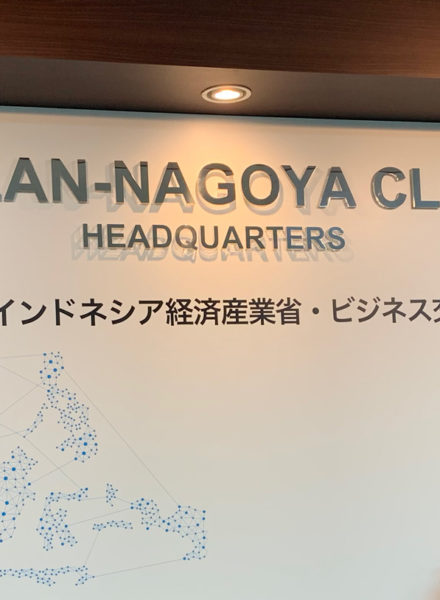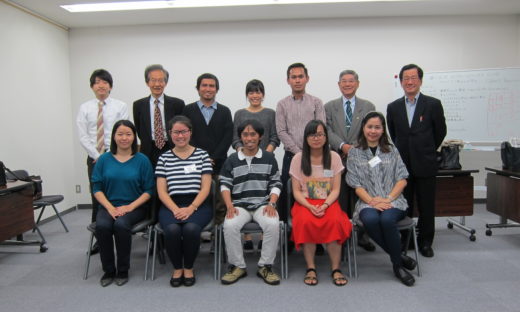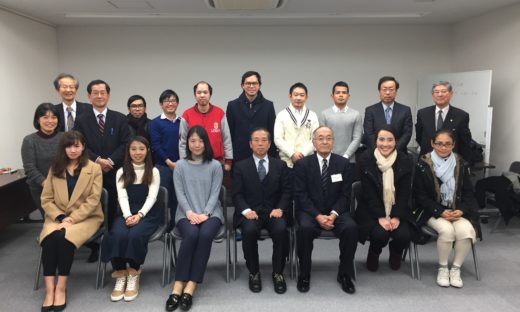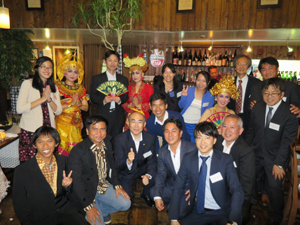第18回ミーティング報告書 2016年1月28日 (18th Meeting Report January 28, 2016)
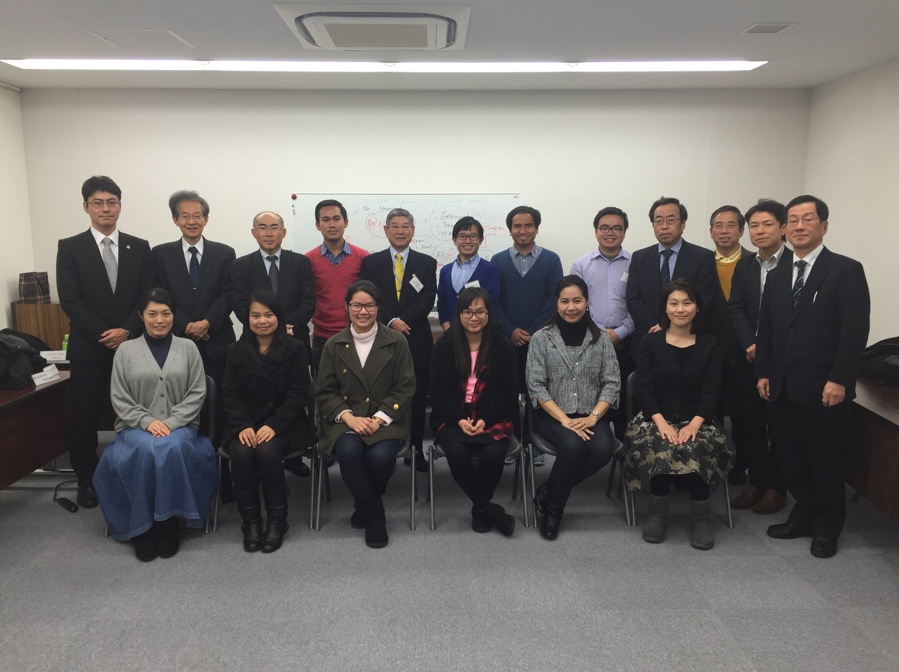
留学生が変えるASEANと日本
第十八回ミーティングを行いました。今年、第一回目の会合です。昨年12月31日大晦日に、ASEAN経済共同体が正式に発足しました。半世紀の時を経て誕生しました。この間、世界情勢は一変し、近年、中国とインドの著しい発展の中で、ASEAN地域は埋没してきました。その危機感から、10か国がまとまって行動しようという選択をしたことになります。
人種、宗教、言語、政治体制、経済段階という多様性から生じる対立を乗り越えて、一つにまとまり、経済発展と平和を目指そうという理念は、高く評価されるものです。宗教、言語、政治体制、経済段階が比較的類似したEUの統合に比べて、はるかに多様性に富んだ難しいテーマを抱える地域でもあります。ASEAN地域の統合は、世界の進む方向の一つの試みでもあります。 ASEAN共同体は、政治・安全保障、社会・文化、経済の3つの柱からなりますが、経済共同体として動くことで、今後、急速に変化を遂げていくでしょう。6億人の市場は、2020年頃には世界第四位のGDPに接近します。様々な課題を抱えながらも、世界におけるASEANのプレゼンスは確実に高くなっていくものと思われます。
記念すべきASEAN経済共同体の発足を受けて、ASEAN-NAGOYA CLUBの活動がASEAN地域の発展への一助になればと考えています。
また、ASEAN-NAGOYA CLUBは、かねがねご指導いただいております名古屋大学大学院国際開発研究科と正式に連携をし、日本とASEANの架け橋を推進していくことになりました。名古屋大学大学院国際開発研究科の皆さまのみならず、名古屋大学の多くの方にアドバイスをいただくことも多くなります。皆様のご期待にお応えしていなければなりません。
来る3月12日(土)には、名古屋大学大学院国際開発研究科と共同開催によるシンポジウムを開催いたします。ASEAN事情の第一人者による、ASEAN地域最新動向のご講演がございます。また、名古屋大学ASEAN留学生が抱負を語ります。ご関心ある方は、ぜひ、事務局までお申し込みください。
さて、今回のミーティングのテーマは、「留学生が変えるASEANと日本」です。一国が発展するときには、いつも留学生が重要な役割を果たします。日本の幕末にイギリスに留学したのは130人ほどと言われています。海外渡航が御法度の時代、長州ファイブにみられるように命がけで渡航し、彼らが日本の基礎を築き上げました。今日、我々の時代があるのも、彼らのお陰であることは間違いありません。経済の発展段階からすれば、ちょうど幕末、明治維新に相当するようなASEANの国もあります。段階の差異はあれ、留学生の皆さんと対話して伝わってくるのは、国を想う志です。彼らの尊い志が、いったい、どのような形で拓かれていくのかを話し合いました。彼らはASEANの将来、日本との関係について熱く語ってくれました。
次回2月のミーティングも引き続き、同じテーマ「留学生が変えるASEANと日本」で行い、3月のシンポジウムで皆様に、留学生の声をお届けしたいと思います。



ASEAN and Japan: the Role of International Students
The 18th meeting of ANC was held as the first meeting in 2016. The ASEAN Economic Community was officially launched on New Year’s Eve, December 31, last year. It was born after half a century. During this time, the world situation has changed completely, and in recent years, the development of ASEAN region has been far behind the remarkable development of China and India. From that sense of crisis, 10 countries have chosen to act together.
The idea of overcoming the conflicts that arise from the diversity of race, religion, language, political system, and economic stage, and aiming for economic development and peace as one, is highly evaluated. The integration of ASEAN countries is more challenging with all their diversity than EU which has relatively similar religions, languages, political systems and economic stages. The integration of the ASEAN region is also an attempt in the direction of the world.
The three pillars of the ASEAN Community, namely the ASEAN Political-Security Community (APSC), the ASEAN Economic Community (AEC) and the ASEAN Socio-Cultural Community (ASCC), are the most crucial areas deemed necessary for the progress and evolution of ASEAN and its peoples. The Blueprints of these three communities have been carefully formulated to detail specific strategic objectives and actions which intend to achieve progress and positive development in the respective areas.
An apparent positive outcome of ASEAN integration is the gradual increase of cumulative GDP within the region. Through the implementation of the ASEAN Economic Blueprint 2025, an ASEAN-wide Self-Certification Scheme has been created. This scheme helps facilitate the utilization of the ASEAN Trade in Goods Agreement by allowing exporters to issue origin declaration which will cut transaction costs.
The market of 600 million people will approach the world’s fourth largest GDP around 2020. The challenges facing ASEAN integration might not be substantial enough to rub off the gloss from its successes so far. However, if the association seeks to achieve its goals by 2025 (or earlier), the measures pointed out have to be applied, with a concerted effort from all member states. Despite various challenges, ASEAN’s presence in the world is expected to grow steadily. We hope that the activities of ASEAN-NAGOYA CLUB will contribute to the development of the ASEAN region.
In addition, ASEAN-NAGOYA CLUB will formally collaborate with the Graduate School of International Development (GSID), Nagoya University, to promote the bridge between Japan and ASEAN. We often get advice not only from GSID but also from all the academics at Nagoya University. A symposium will be held jointly with GSID on Saturday, March 12th. There will be a lecture on the latest trends in the ASEAN region by a leading expert in ASEAN affairs. In addition, ASEAN international students at Nagoya University will talk about their aspirations. If you are interested, please apply to the secretariat.
It could not be denied that international students play an important role to develop a country. It is said that there were about 130 Japanese Students who studied in England at the end of the Edo period. There is no doubt that they were the ones who played a very important role in economic development in Japan. We have to thank them that we have our time today.
From the stage of economic development, there are some ASEAN countries that are equivalent to the Meiji Restoration at the end of the Edo period. Through the dialogue with the international students, we know the perspectives, ambitions, hopes, and steps they see as important in the development of their respective countries.They enthusiastically talked about the future of ASEAN and its relationship with Japan. We are going to continue this discussion in the meeting next month.
<日本人メンバー>
小里氏、西氏、山村氏、鈴木氏、大黒氏、倉科氏、春名氏、箕浦氏、松久氏(コーディネーター)、田中氏(スタッフ)
<留学生メンバー>島津先生(コメンテーター)、Mr.INDRA KESUMA NASUTION、Mr.Lyhong Lim、Ms.Sisouk Boualaphiane、Mr.Chheourn Kuyeng、Ms.Kim Channary、Ms.Klissanavanich Temsiri、Ms.David Maria Teresa Santos、Mr.Le Duc Son
<Japanese members>
Mr. Ori, Mr. Nishi, Mr. Yamamura, Mr. Suzuki, Mr. Oguro, Mr. Kurashina, Mr. Haruna, Ms. Minoura, Mr. Matsuhisa (Coordinator), Mr. Tanaka (Staff)
<International student members>
Professor Shimazu (Commentator) , Mr.INDRA KESUMA NASUTION, Mr.Lim Lyhong, Ms.Sisouk Boualaphiane, Mr.Chheourn Kuyeng, Ms.Kim Channary, Ms.Klissanavanich Temsiri, Ms.David Maria Teresa Santos, Mr.Le Duc Son.

